Similarly to the current situation, the suburban train fleet was extremely old by the 1960s. A variety of old trains served the lines, and demand for new vehicles increased constantly.
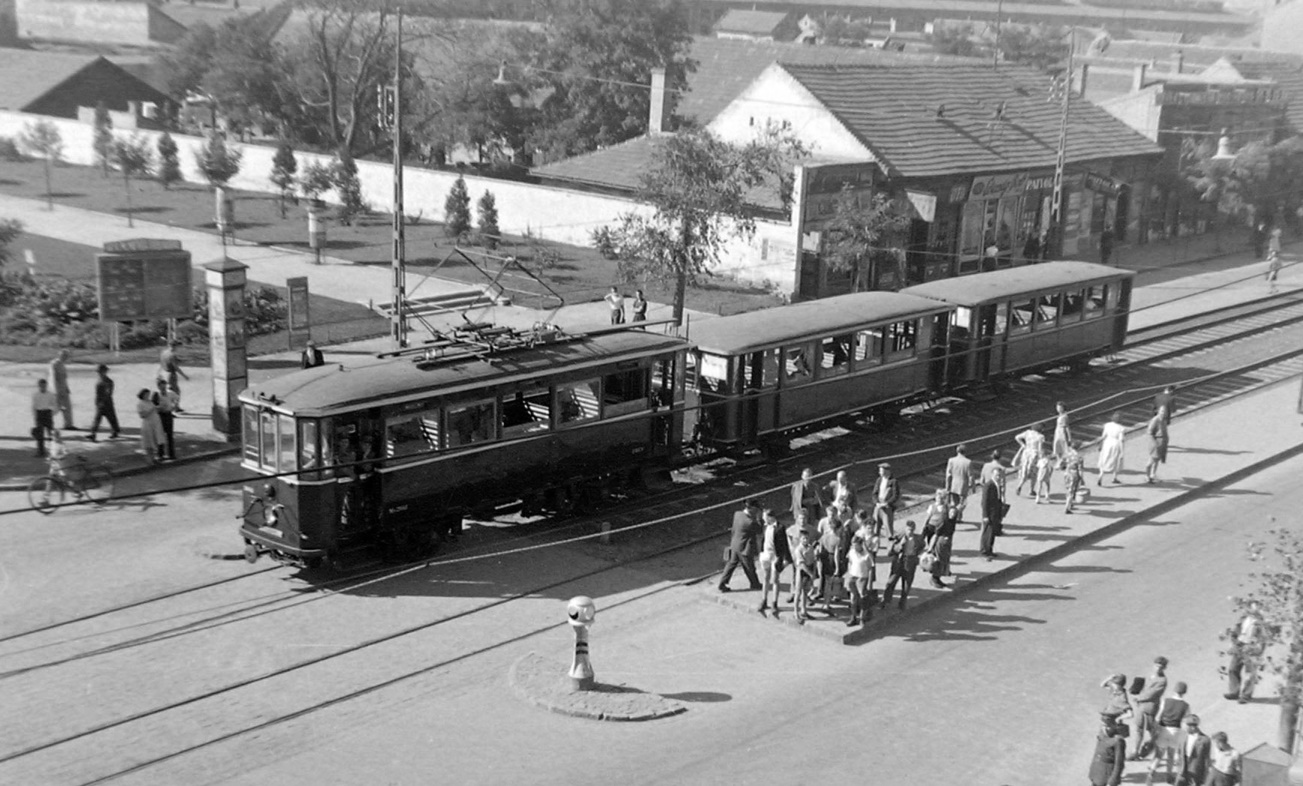
Old trains such as this one were still running on the Csepel line in 1951 (Photo: Fortepan, Hungarian Police)
As a result, the operator of the suburban railway lines, which at that time was not BKV, but the company called Budapest Suburban Railway, decided to purchase new cars in 1962. The bodies were manufactured in Hungary, and original plans included Ganz engines. However, these did not meet requirements. Thus engines and other necessary electrics were imported from the GDR.
The two completed prototypes were first tested on the Budaörs-Törökbálint line in 1963. In January 1965 articles appeared in the press promising that all trains would be replaced with the new M-IX (now commonly referred to as MIX) trains by the end of the year. The new trains were expected to reduce travel time making suburban connections high-speed railways.
New trains appeared in regular circulation on the Csepel line at the end of November 1965. On 21 November 1965, the newspaper Népszabadság reported on the new trains:
“New trains on the Csepel high-speed railway
All old trains on the Csepel high-speed railway – which transports over 30.000 people between the worker's district and the capital each day – will be replaced with the most modern trains built in the GDR and Hungary. The six-car, 108-meter-long, trains could carry up to 1200 passengers and were designed according to the most modern principles. Following the completion of the track renovation in 1967, travel time will drop from 14 to 10 minutes.”
Many sources claim that MIX trains have operated on the Csepel line since January 1963. However, in 1965 the contemporary press hailed the trains as novelties. Based on vehicle data, two trains entered the fleet in 1963, the other 25 trains in 1965–1966.
One of the biggest novelties of the new trains was their many doors. 8 sets of wide doors allowed quick passenger changes. Contemporary articles claimed that the train was could accelerate to a speed of 50–60 kph within a hundred meters, while its maximum speed was 90 kph. In practice, the trains were limited to 80 kph.
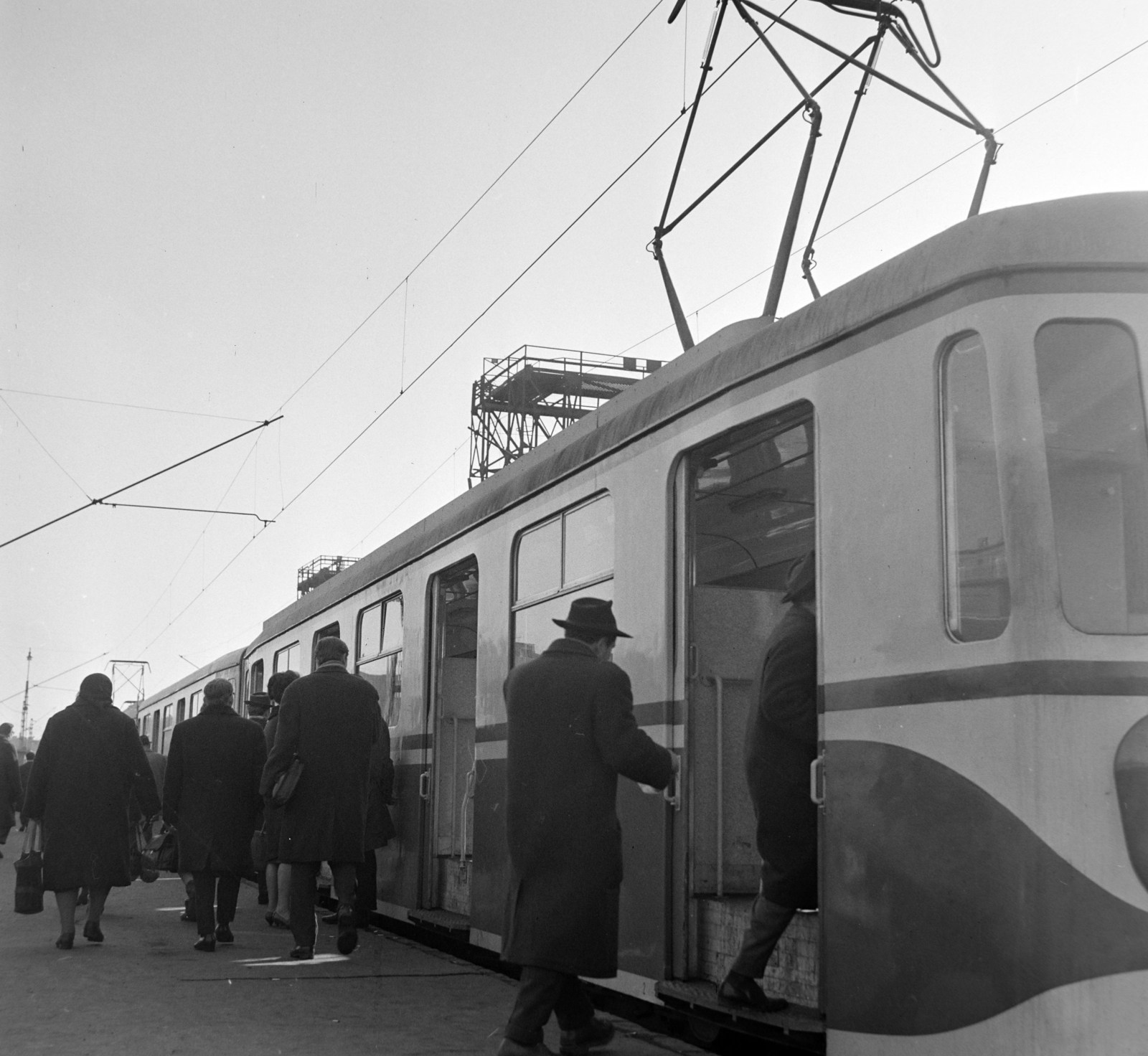
The modern trains significantly improved travel conditions in the 1960s. (Photo: Fortepan/No.: 178428)
Despite being home-made, as the bodies were built in the BHÉV workshop, none of the vehicles failed. Naturally, mass production happened in MÁV's Dunakeszi vehicle repair workshop, and not in BHÉV's own.
Most of the trains operated on the Csepel line for 30 years and were retired between 1994 and 1997. Through the 30 years, they were even modernised. In the early 1980s, their bogies were replaced with new ones similar to those on trains purchased from the GDR in the 1970s. They were also given square headlights and a new uniform green paint job. Following the update, their type designation changed to MIXa.
They also remedied an early problem: due to the coil spring suspension, the carriages rocked so much that the tilting windows sometimes opened on their own, hitting passengers in the head. Because of this, the maximum opening angle of the windows was limited, causing the interior to heat up easily. Sliding windows were installed during the renovation.
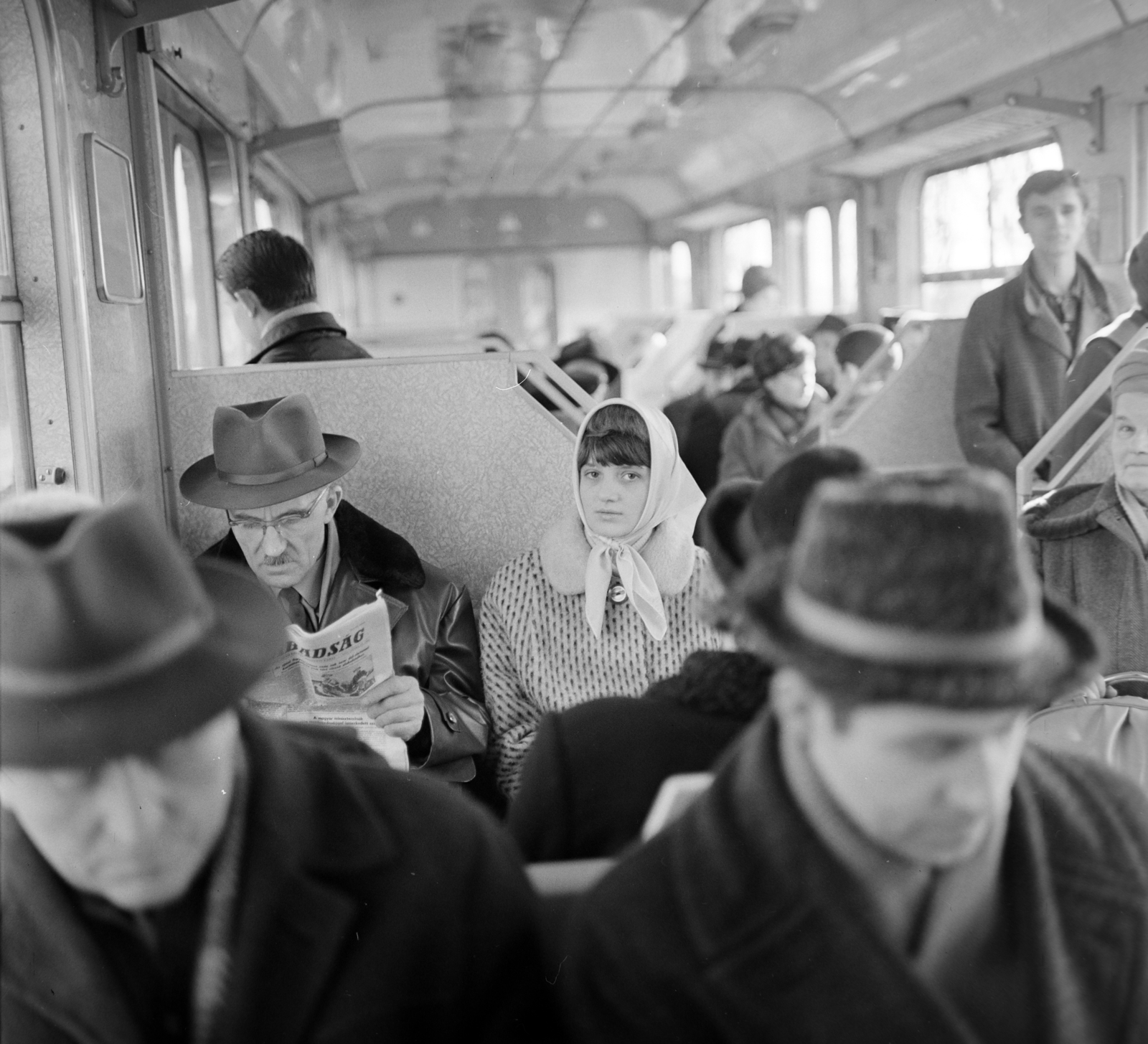
Passengers on the new trains on the Csepel line (Photo: Fortepan/No.: 178435)
The first MIX train to be retired was donated to the Municipal Public Transport Museum in Szentendre. The seven remaining members of the fleet still serve the Csepel line, after subsequent renovations.
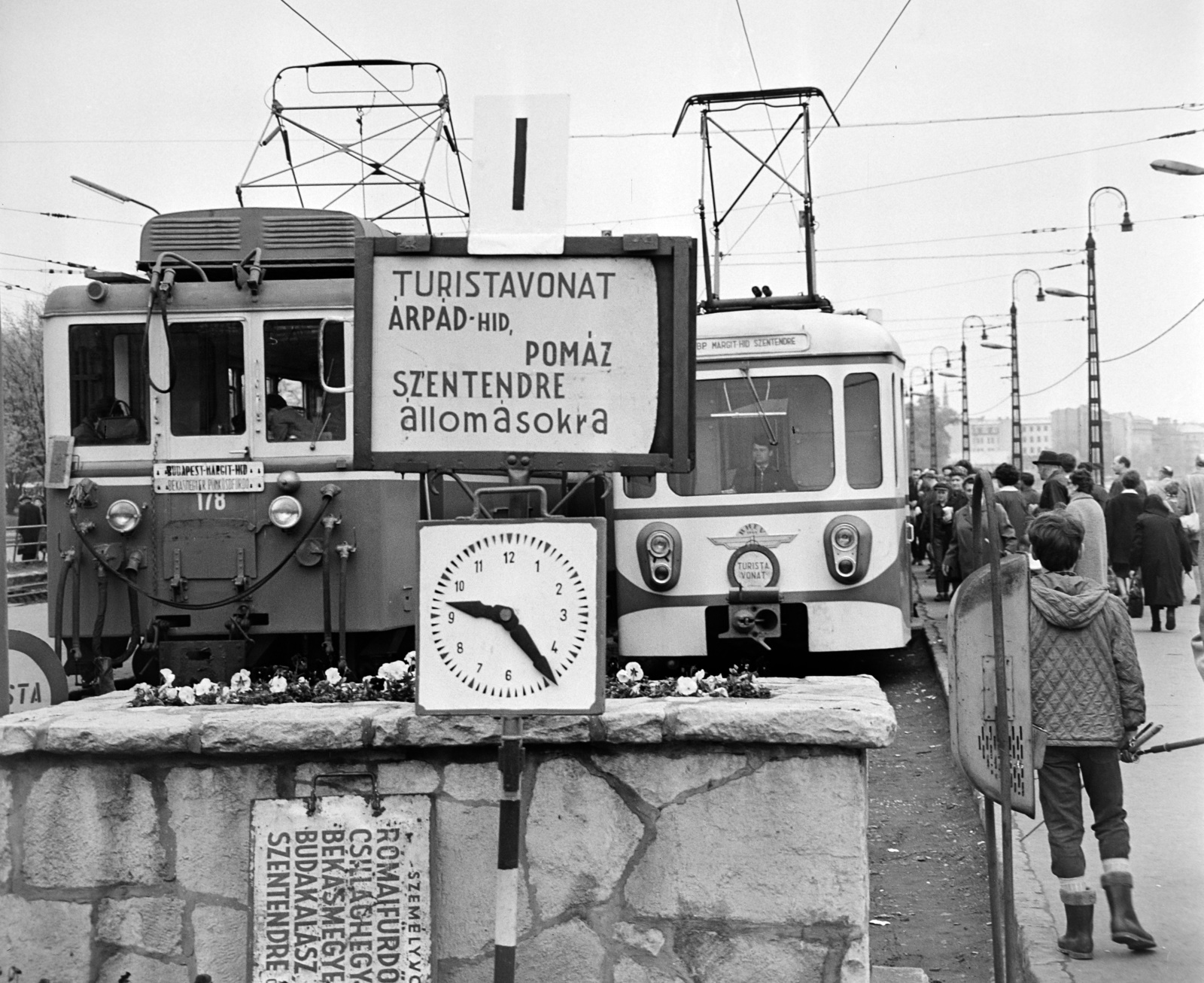
The trains were also used on the Szentendre line for a short time. An old carriage (Photo: Fortepan/No.: 178864)
One of the still operational so-called “large-units” composed of motor coaches 831-616-832 and 825-613-826, was painted back to its original light cream and green livery for the 125th anniversary of suburban railways operating in Budapest in 2012.
A “large-unit” of six cars consists of two motorcoaches. A motorcoach also consists of three parts: two cars with engines and carriage between the two.
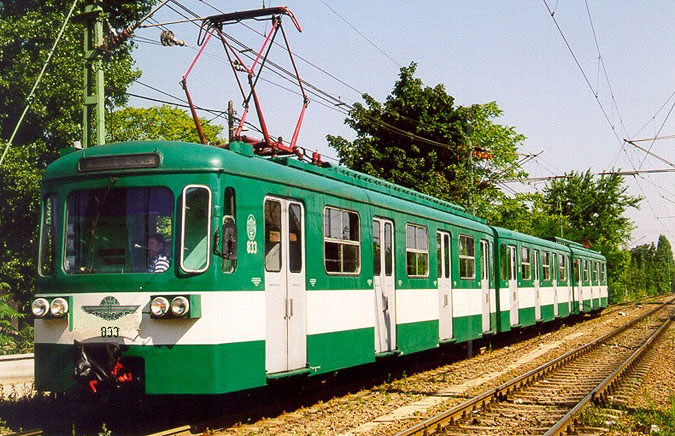
An already renovated train with track number 833 from the BKV website. Sever of the trains are still in service (Photo: BKV.hu)
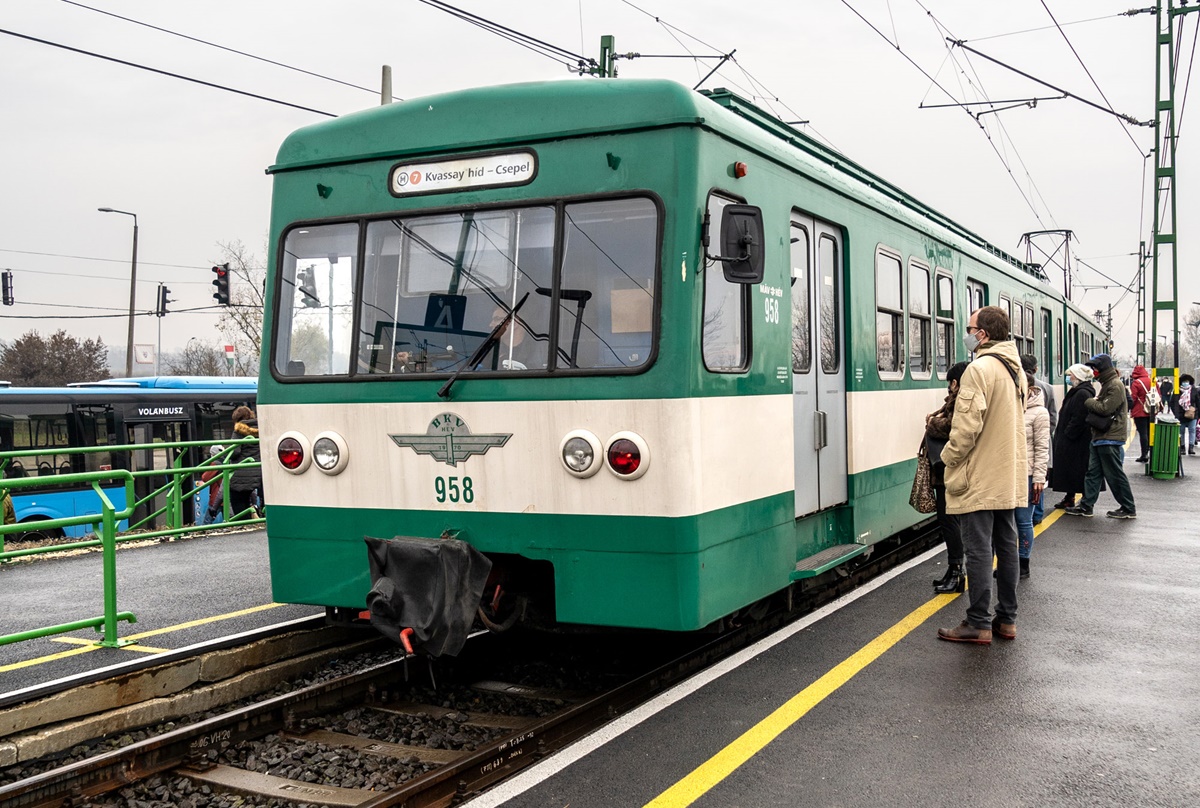
The "newer" East German trains, purchased in the 1970s are not exactly modern either, anymore (Photo: Both Balázs/PestBuda.hu)
Each of the MIX trains is well over half a century old, which is a lot for a motorcoach. It would seem the time to replace them has come.
Cover photo: Crowds travelling on the new train (Photo: Fortepan/No.: 178434)

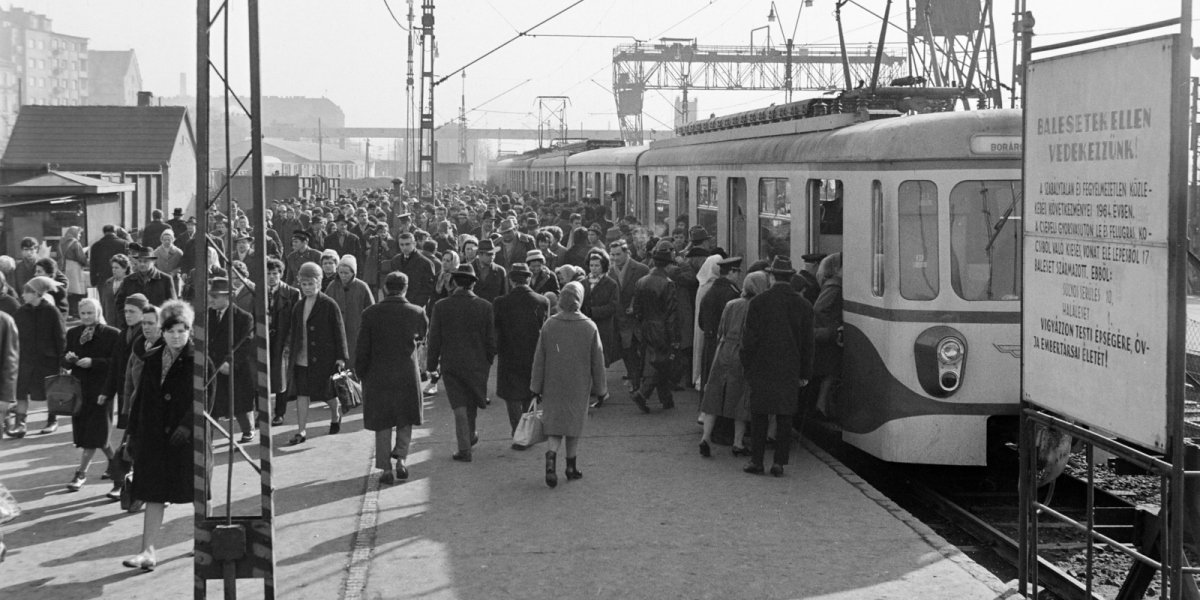







Hozzászólások
Log in or register to comment!
Login Registration